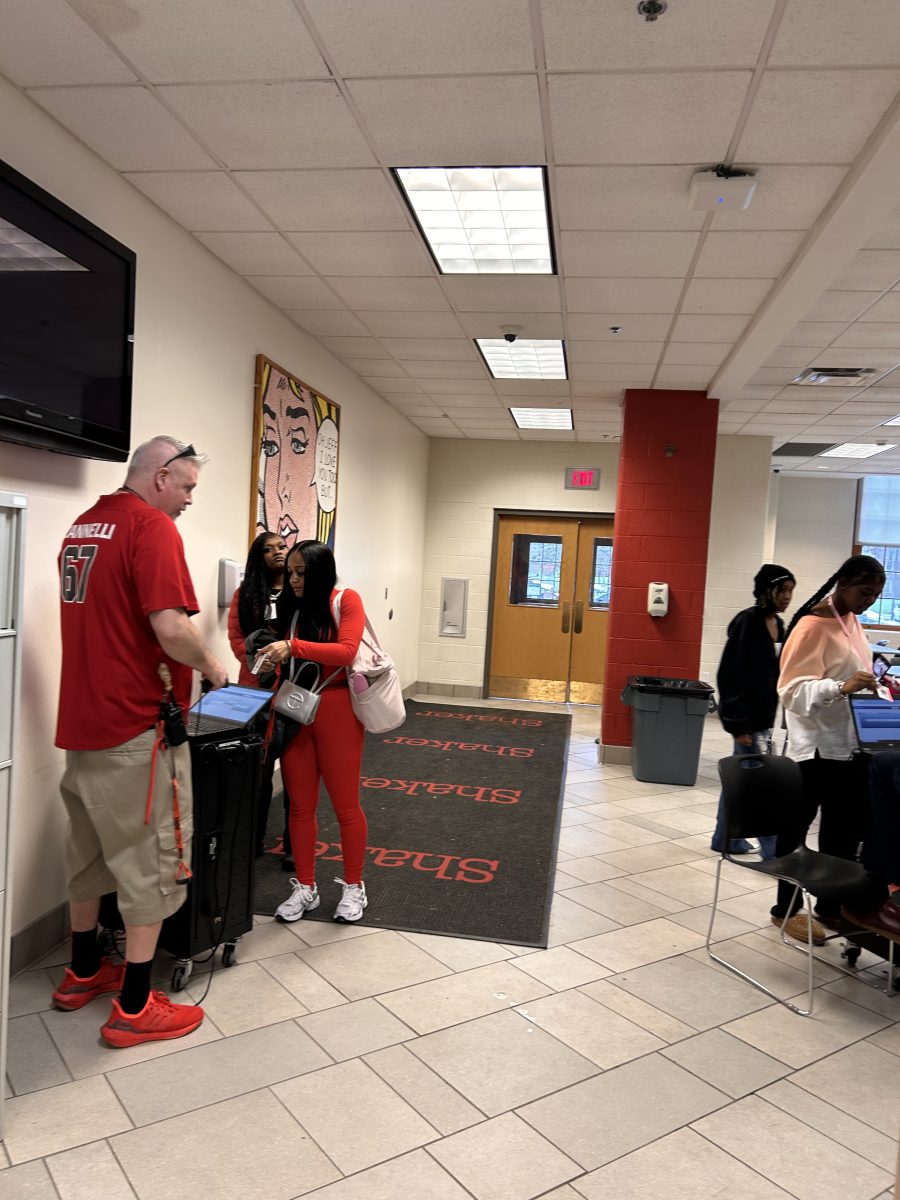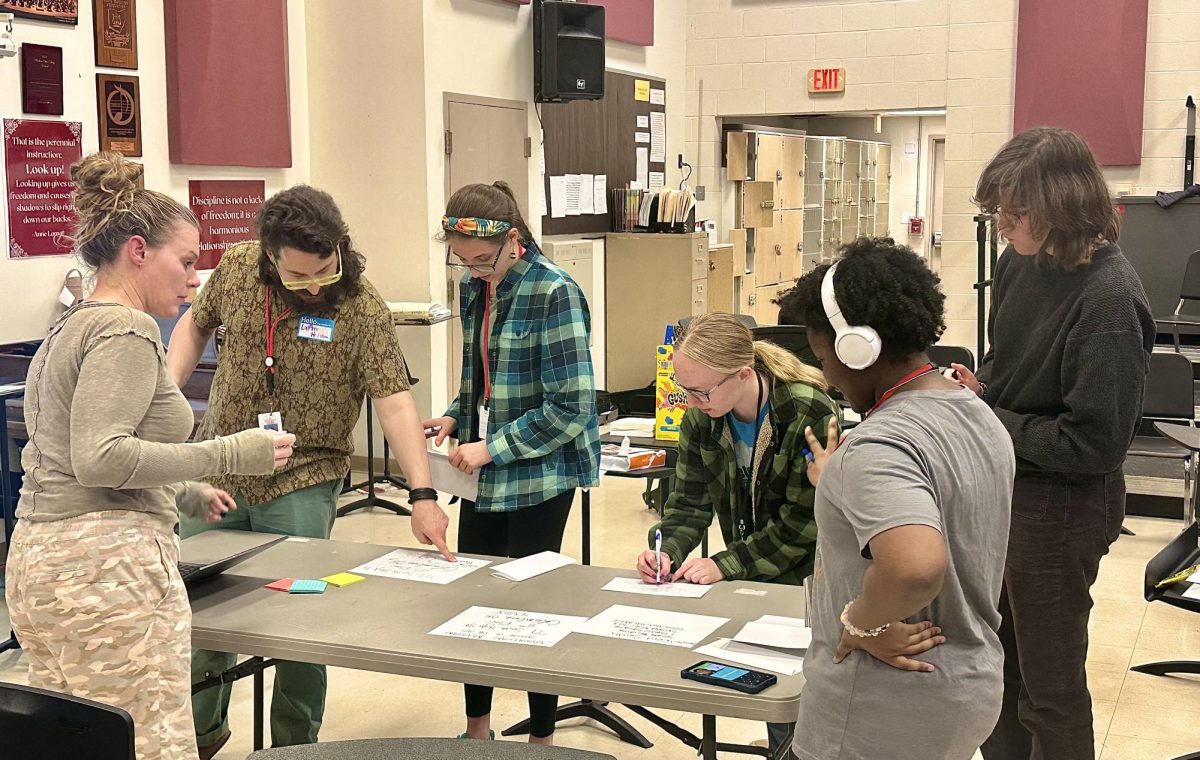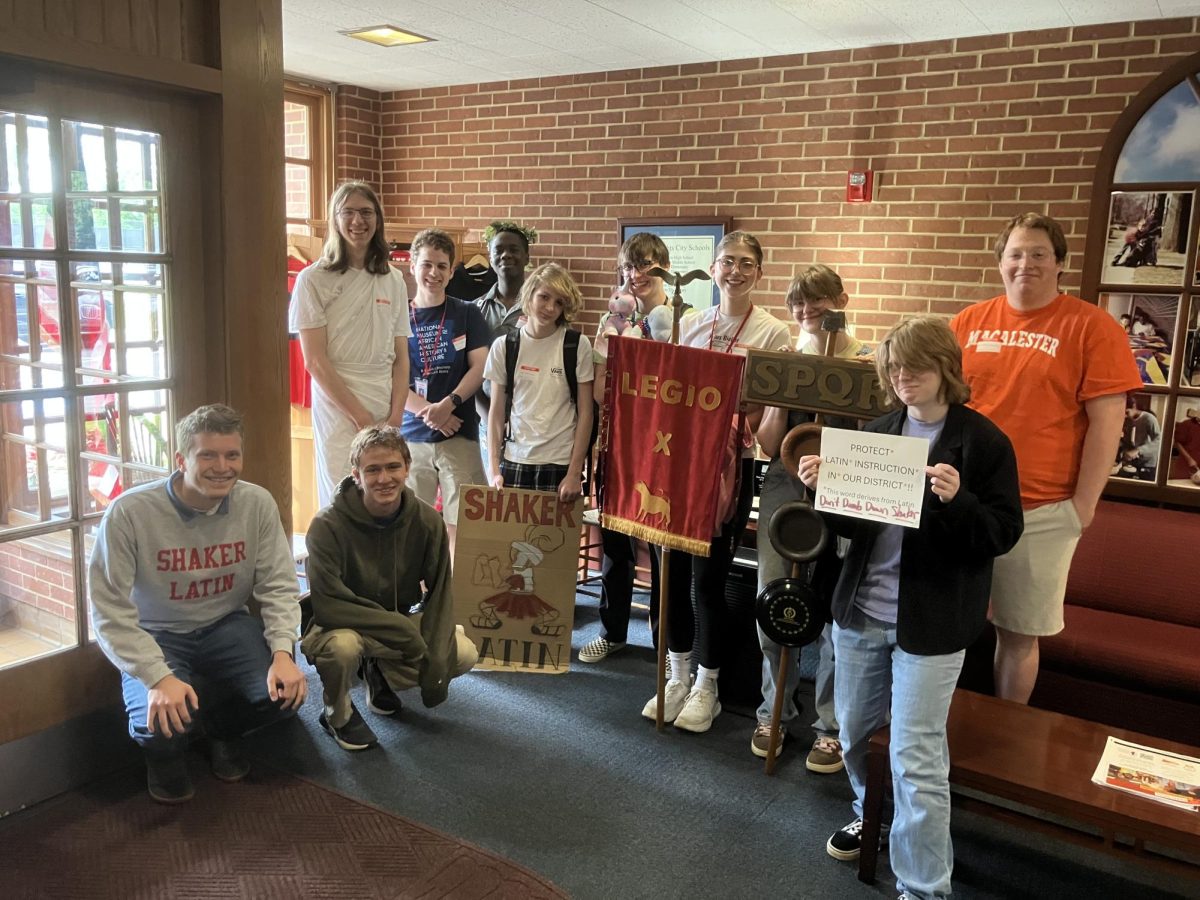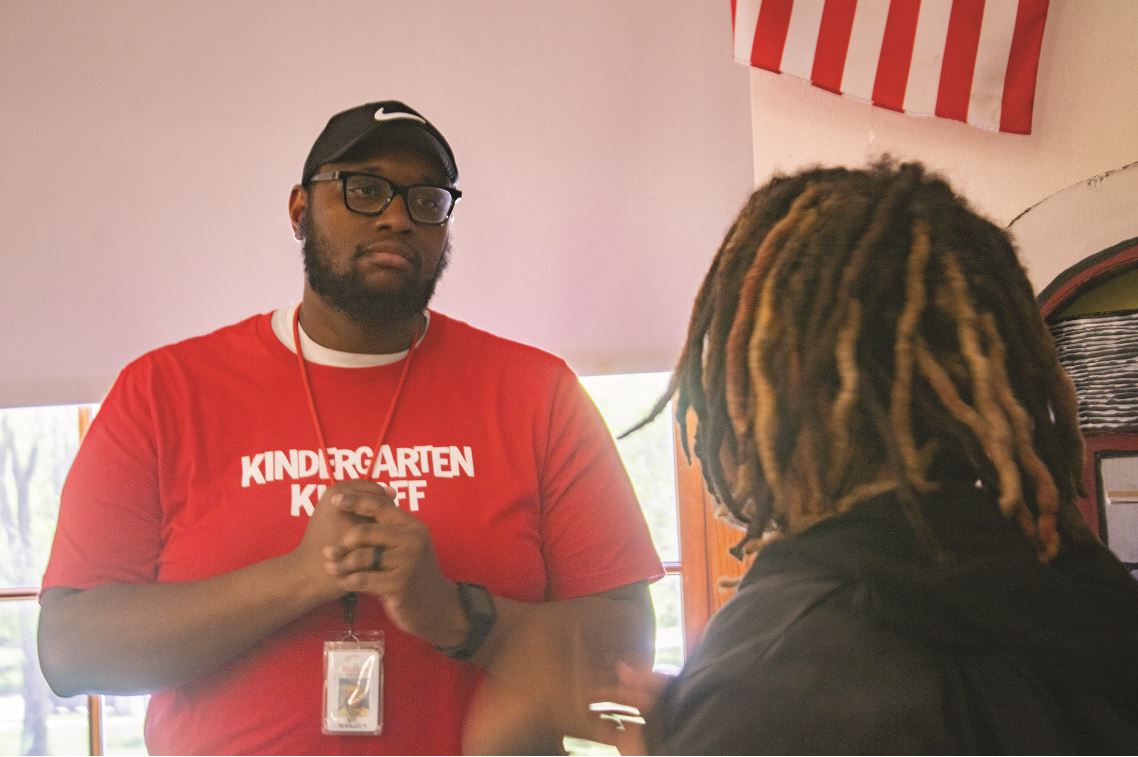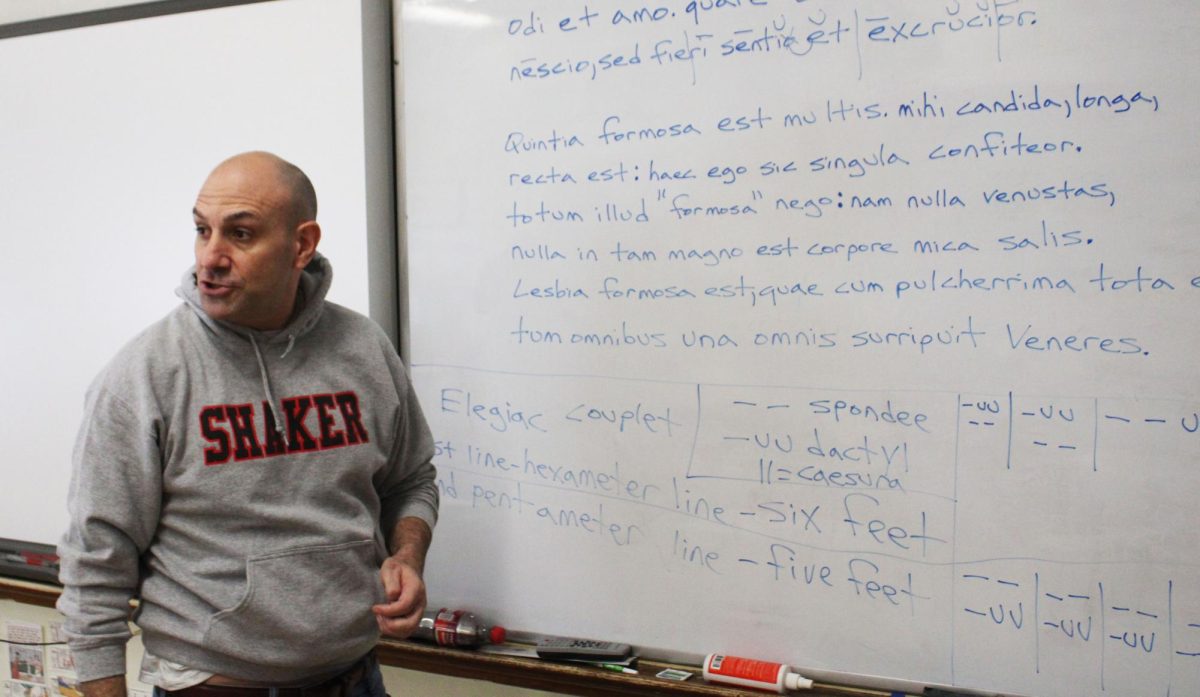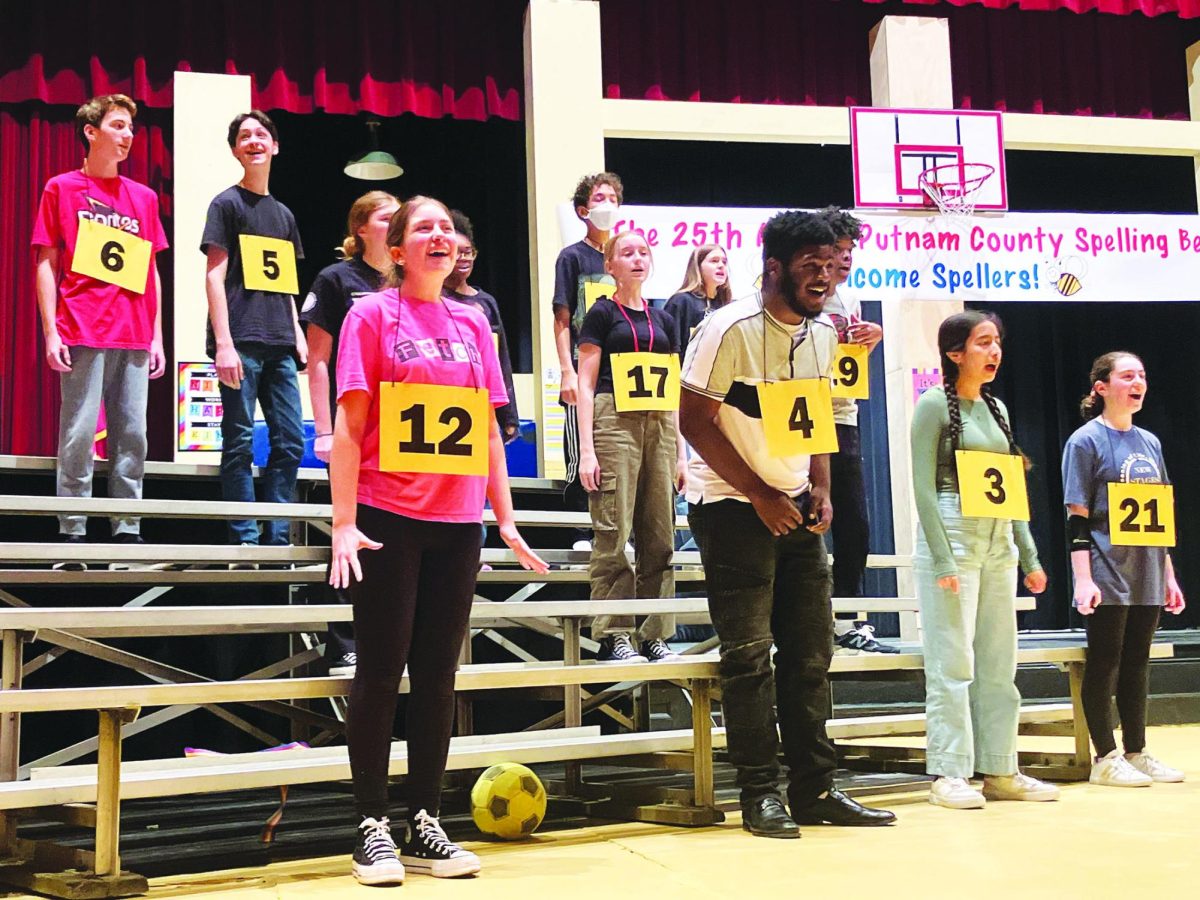Six months after tardy kiosks were installed in the lower cafeteria, tardy students are still waiting in line to use them.
But their waits are shorter.
According to security guard and Student Support Coordinator Fredrick Clemon, the kiosks have improved school safety. “The kids are displaying their IDs at a much higher rate than last year, which is an added security bonus,” Clemon said. Clemon, along with Dean of Students Greg Zannelli, work the tardy kiosks every morning. Zannelli declined to comment for this story.
Since they arrived, the kiosks and ID policy have “gone through some learning curves,” said Associate Principal James Dubsky. At the time of its installation in October, there was a sole tardy station in the lower cafeteria. Now, on busy days, three stations are running.
“I think the kiosks serve more as a thermometer than a thermostat; a thermometer merely gages the temperature. the thermostat allows you to change it. I don’t know that it has given us the ability to determine why kids are tardy, as much as how many kids are tardy,” Dubsky said. While the data obtained from PureData, a student data service that integrates with PowerSchool, allows him to track how many students are late on a given day, it does not indicate why.
“Student attendance impacts the late lines. If I have fewer kids going to school, I have fewer kids late,” Dubsky said. More absences on a given day, because of weather, for example, can mean fewer tardy arrivals. “I think factors such as traffic and weather have a significant impact upon how many students arrive late, though unfortunately I don’t have the concrete data to support this,” Dubsky said.
Dubsky said that the kiosk procedure helps increase ID compliance; all students who enter late must scan their ID or receive one before going to class. Students who arrive on time enter without displaying or scanning IDs. “I would say that [the kiosks] are working and more effective in this regard,” Dubsky said. Late students who arrive without IDs are sent to another line to receive temporary ID or a replacement. Students who choose replacements are charged $10 through their PowerSchool accounts.
Dubsky said he has noticed fewer repeat offenders not wearing IDs. “There’s still hiccups, but it’s not like I have the same kid going to forget it, ‘I’m just not going to have it, I’m just not going to wear it’,” he said.
Junior Devon Barksdale said the kiosks have improved since they were installed. “With the strict ID policy they’ve set, I’d say the tardy kiosks are more efficient now than in the beginning of the year,” said Barksdale. He said that the lower cafeteria kiosks aren’t in the best location, however. “The front [entrance] is the most efficient place for a kiosk to go up,” Barksdale said.
Junior Omar Torain does not think the kiosks are situated in the greatest location. “I think they should have a kiosk at every door. There should be a security guard at every door guarding the kiosk. It would save more time,” Torain said. Additionally, he hopes the school makes technological improvements next year. “I’d like to see an automatic scanner at the door next year. Something where you scan your ID and then open the door. That would save a lot of time as well,” Torain said.
Dubsky said he has been focusing on making the process efficient as it exists now, but isn’t set on kiosk location. “Maybe next year we can determine there is a better place to have them, now that we have more manpower, with more of our staff members being trained in the kiosks,” he said.
Not all students believe the kiosks are efficient, however. “Standing in the line takes time. You’re already late, but standing in the lane takes more of your time, and I think that’s inefficient,” Torain said.
The Shakerite observed the tardy arrival process in the lower cafeteria April 5 and timed three students’ progress through the kiosk lines. The first student observed reached the tardy kiosk in 3 minutes and 47 seconds. The second and third students observed recorded wait times of 4 minutes and 14 seconds, and 2 minutes and 29 seconds, respectively, as the line began to wane at 8:30 a.m.
Compared to The Shakerite’s Oct. 9 observations, these times were shorter but may not represent the full picture. “The length of the line always varies from day to day, so I can’t give [any] definitive answer whether the line is longer or shorter than the beginning of the year,” Clemon said.
Dubsky believes the kiosks are here to stay. He said, “I think it’s safe to say that next year we can anticipate we will have the kiosks in some version.”

